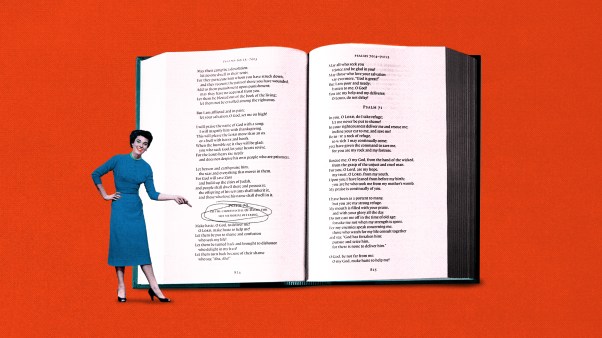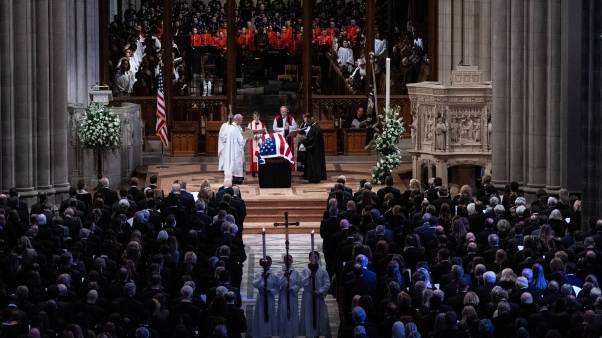From the steps of the Lincoln Memorial, Martin Luther King Jr. cast such a transformative vision for freedom and equality in his “I Have a Dream” speech that, “with a single phrase, [he] joined the likes of Lincoln and Jefferson as men who’ve shaped modern America,” wrote Time magazine. Sixty years ago this August 28, King gave his speech during the 1963 March on Washington for Jobs and Freedom. In that moment, King ascended from a movement leader to a cultural icon.
Though they are well known, cultural icons are often flat and static, lacking the luxury of nuance or adaptability. An iconized version of a person can be easily co-opted and used against the very causes and values of the person in whose image the icon is fashioned.
Within his own lifetime, King experienced the difficulties of having a single moment define his entire legacy, and he worried about misuses of his “Dream” speech. King knew listeners tended to focus on his final six minutes of soaring refrains at the expense of the first 11 minutes of careful socioeconomic and cultural analysis. For many, the hopeful conclusion of the “Dream” speech was twisted into a facile optimism that avoided the hard questions necessary for real progress.
In May 1967, King publicly addressed these concerns. Much of the optimism he’d embodied just three years before had been tempered by a stark realism that racism, economic exploitation, and militarism were much more entrenched in the American way of life than he’d realized. In an interview with journalist Sander Vanocur, King attempted to reclaim his own legacy.
“I must confess that that dream that I had that day has in many points turned into a nightmare,” he said. “I’ve come to see that we have many more difficulties ahead and some of the old optimism [of the “Dream” speech] was a little superficial and now it must be tempered with a solid realism.”
Acutely aware of popular misunderstandings, King used his platform to help people better understand how to properly apply his words. Nevertheless, in the decades following his assassination, some have unwittingly misconstrued and misrepresented King’s dream by lifting phrases from the speech out of context—sometimes even in service of causes that threaten to erode the very legacy of justice King worked so hard to build.
This has become such a common occurrence that King’s youngest daughter, Bernice King, routinely takes to social media to correct some of the worst misuses of her father’s legacy. Last year, for example, Virginia Gov. Glenn Youngkin invoked the “Dream” speech while signing an executive order banning books that teach the history of racial discrimination in America.
Bernice King quickly responded with a charitable but direct tweet, writing that “our nation has yet to comprehensively, strategically, legislatively, and systematically cast aside prejudice, racism, and bigotry. I call you beyond acknowledging my father to embracing the work of ensuring policies, including in education, that reflect his teachings.” Like her father, Bernice King calls us beyond talk and superficial optimism to a higher mission, a deep commitment to the hard work that makes for real progress.
The apostle John instructs us to “not love with words or speech but with actions and in truth” (1 John 3:18). As believers, we can renew our commitment to genuine service-oriented love by avoiding the popular misuses of King’s “Dream” speech. Today, there are at least three ways we can more substantially engage with King’s dream.
First, we must recognize the painful history behind the speech. King’s dream can only be properly understood against the nightmarish backdrop of American chattel slavery and its persistent legacy. King chose the steps of the Lincoln Memorial precisely in order to invoke this history. While the centennial anniversary of Lincoln’s Emancipation Proclamation that same year remained fresh in America’s collective memory, King seized the opportunity to remind the nation that “100 years later the Negro still is not free.”
King especially focused on the hundred years of failed promises since the Emancipation Proclamation: the unfulfilled hopes of the reconstruction era, racialization of the prison system, the sharecropping system, racial terrorism against Black economic centers, Jim Crow, and segregation. According to King, these systemic failures of the country (rather than personal failures of its Black citizens) were the chief cause of racial disparities. Though disturbing, this history of broken promises must be reckoned with in order to realistically understand King’s dream.
America’s racial history may be one of the most contentious struggles of our modern political landscape. Many fear that reckoning with America’s racial sins may erode patriotism or national morale. But as Christians, we know healing is not found in hiding from the past (Prov. 28:13). Denial of our racial past or attempts to revise it are strategies to justify ourselves, to clean up our own reputation by minimizing America’s misdeeds or by national mythmaking. But we will only find God’s mercies for healing and hope as we confess and repent in faith.
How can we ever turn from the ongoing legacy of past atrocities if we will not face that past with honesty and humility? Confession and repentance are acts of faith. As believers, we hold that the gospel of Christ has enough power to heal even the ugly divisions and disparities of American racism.
King held that to be true. That’s why he could begin his “I Have a Dream” speech with an unflinching confession of America’s past. So can we. Texts like Carter G. Woodson’s The History of the Negro Church and Jemar Tisby’s The Color of Compromise can help the church in America wrestle with its own complicity in racial injustice and embrace its calling to help heal the country.
A second way the church can honor King’s legacy is to examine the practical issues he spoke of in the “Dream” speech. In its first two thirds, King broached several specific topics that are still pressing today, including police violence: “We can never be satisfied as long as the Negro is the victim of the unspeakable horrors of police brutality.”
In the wake of the killings of Michael Brown, George Floyd, Breonna Taylor, and numerous other unarmed Black people at the hands of police in recent years, many Christians have been galvanized against police brutality. This marks a place of substantial resonance between the struggle for freedom in the ’50s and ’60s and its ongoing expressions today.
Any meaningful engagement with the “Dream” speech and the civil rights movement must take police violence seriously. Esau McCaulley pointed out in CT that police misconduct is not merely a social concern, but a gospel concern. Examining Romans 13 and Luke 3:14, McCaulley said a vision of gospel-grounded policing “calls both the state and its officers to use their influence to protect the weak.”
Understanding and addressing the obstacles to fair and accessible housing is another key to meaningful engagement with King’s dream. Sixty years ago, King said, “We cannot be satisfied as long as the Negro’s basic mobility is from a smaller ghetto to a larger one.” And yet, five decades after the Fair Housing Act was signed, the rate of Black homeownership remains at 42 percent—the same as in 1963.
This ongoing disparity is rooted in the legacy of red-lining and other discriminatory housing practices, including the Federal-Aid Highway Act of 1956 that began routing highways through Black and brown communities. This legacy, as well as current discriminatory practices, can keep potential Black homeowners from gaining access to the best opportunities for housing.
The prophets Micah, Amos, and Isaiah spoke powerfully in their day about God’s intention to provide a place of safety, rest, and abundance for his people through the means of land. Walter Brueggemann points out in The Land that ancient Israel’s land promises speak redemptive hope to America’s current housing crises.
Perhaps unsurprisingly, voting rights and equitable political representation also factored prominently in King’s speech. He noted, “We cannot be satisfied as long as the Negro in Mississippi cannot vote and the Negro in New York believes he has nothing for which to vote.” King saw equal access to the ballot box and political representation as key to securing civil rights within a democratic society.
Thanks in large part to King’s moral leadership, the Voting Rights Act of 1965 was signed into law by president Lyndon Johnson. This addressed the long history of literacy tests and other discriminatory practices that had historically disenfranchised Black voters. Today, as lawmakers work to ensure the integrity of the voting process, they must not do so at the expense of equitable access to the vote. Restrictive laws that depress turnout among voters of color stand in direct opposition to King’s legacy.
King desired more than voting rights; he knew it would be pointless to achieve full access to the vote without meaningful representation on the actual agendas of lawmakers. King’s dream entails real political representation that addresses the unique needs of minority populations.
By the time he reached the famous refrain in his speech, King had already laid the necessary historical and social groundwork to take us to church, as fellow civil rights leader Clarence Jones phrased it. King’s hopeful vision assumes serious work around police and criminal justice reform, fair housing, and voting rights, among other issues. His words are not merely historical relics of a bygone era but are a distinctly contemporary call to action.
Last, the church can examine the practical theology beneath the “Dream” speech. King was a fourth-generation preacher who carried out his public ministry as a pastor-theologian. In order to understand King’s message, we must understand his faith. One of the most fundamental aspects of King’s theology was what he often called “somebodiness.” This was a biblically rooted belief in the fundamental value and dignity of every human life.
In the Jim Crow South, society sought to instill a sense of inferiority among Black Americans. Grown men were routinely called “boy,” and Black people were forced to accept not only separate conditions but inferior ones.
However, the Bible and the Black church taught King differently. He was raised on biblical passages like Genesis 1:27 and Galatians 3:28, believing that all people are made “in the image of God” and that all believers, regardless of race or gender or social status, “are one in Christ Jesus.” He understood that in the sight of God and within the life of the Black church, everybody was somebody. This belief in the inestimable value of human life drove King to fight for equal rights and freedom until “justice rolled down like waters and righteousness like an ever-flowing stream” (Amos 5:24).
When King said, “I have a dream that my four little children will one day live in a nation where they will not be judged by the color of their skin but by the content of their character,” he was mainly referring to the doctrine of somebodiness. He longed for a day when America’s legacy of racial injustices no longer hindered access to equal opportunities.
However, this quote from King’s speech has been co-opted by some who suggest colorblindness as a solution for racial reconciliation. But this entirely misses King’s point, and it contradicts everything he’d said so far.
If the nation were to suddenly become colorblind, it would forget the hundred years of painful history with which King began his speech. If the nation became colorblind, it would never address the racialized criminal justice, housing, economic, and political disparities that King highlighted. If America became colorblind, it would never make good on its emancipatory promises to Black citizens because it would never redress historic injustices or their current legacy of racial disparities. Instead, the nation would move ahead without repairing what is broken. A colorblind nation would enshrine racial disparities beneath a veneer of false peace, ensuring that King’s dream would never be fully realized.
No, King never envisioned a colorblind America. However, he did envision a committed America. King dreamed of an America so committed to the truth that it would acknowledge its historic failures and make good on its promises of freedom.
King dreamed of a country so committed to peacemaking and racial justice that it would do the hard work needed to ensure no vestige of historical racial disparities remained. The church in America ought to be at the forefront of that effort. If freedom will ever truly ring across this land tomorrow, we must commit ourselves to every positive action necessary to make King’s dream a reality today.
Mika Edmondson is lead pastor of Koinonia Church in Nashville and the author of The Power of Unearned Suffering: The Roots and Implications of Martin Luther King, Jr.’s Theodicy. Speaking Out is Christianity Today’s guest opinion column.













